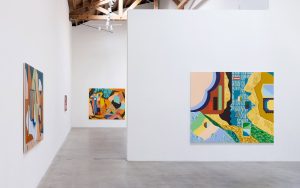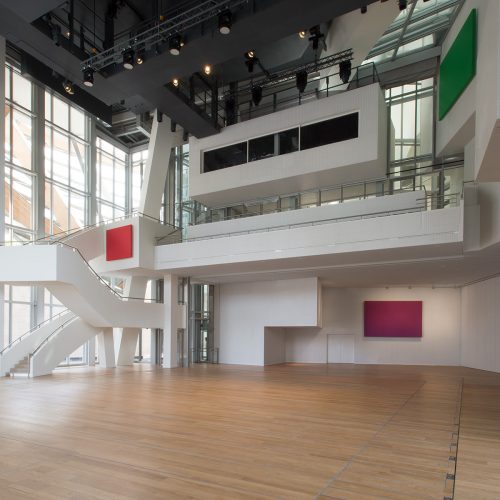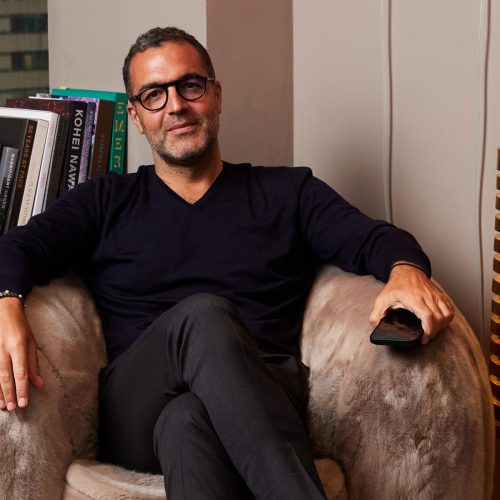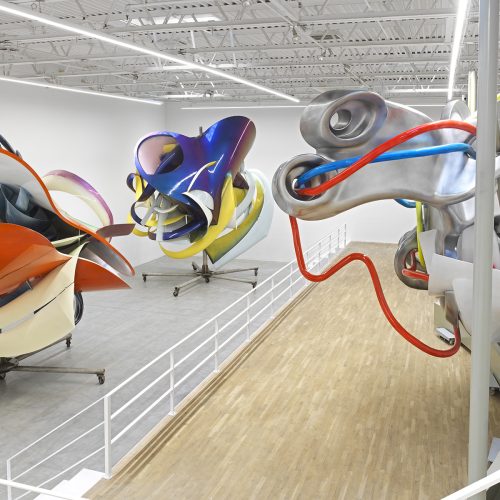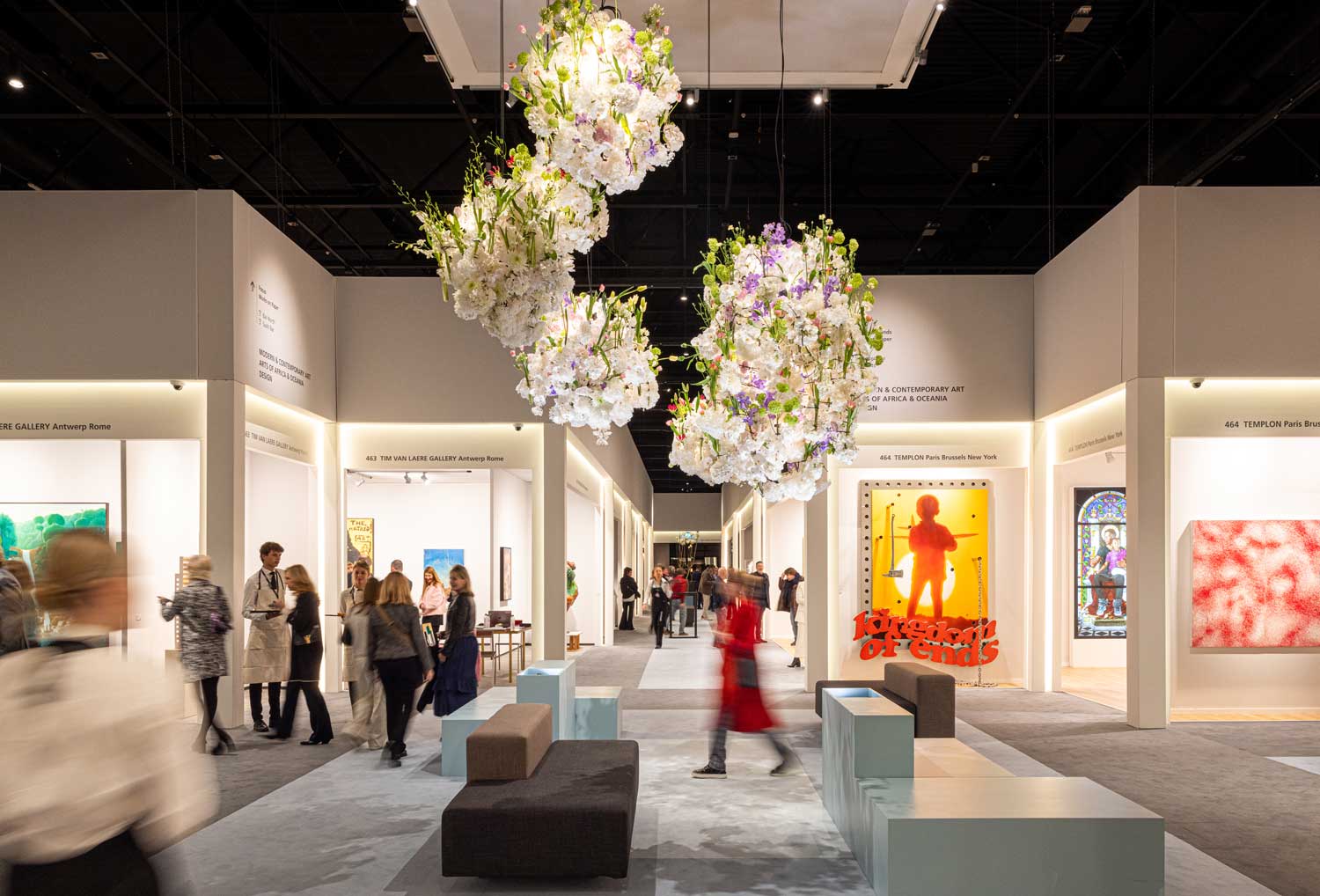

6 Fascinating Finds from TEFAF Maastricht 2024
From a rare Roman cameo to a dazzling Degas, these are the top picks from the 37th edition of the prestigious fair, which runs from March 9 through 14
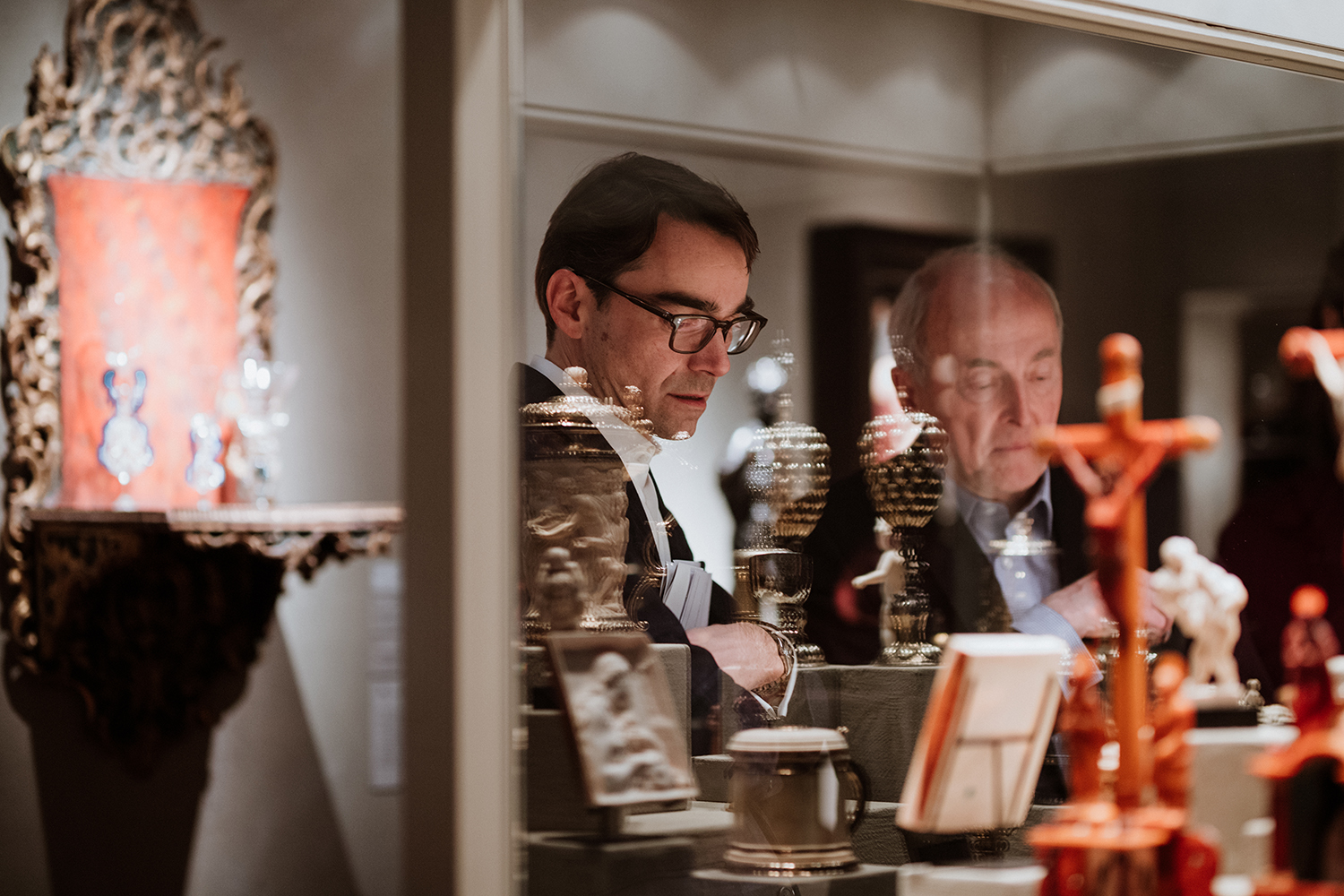
Kunstkammer Geord Laue. Photo: Courtesy of TEFAF
For two weeks every March, the medieval Dutch city of Maastricht becomes the center of the art world as droves of the globe’s most prominent art collectors make the annual pilgrimage to The European Fine Art Fair (TEFAF). At a tiny airport on the border of Germany and Belgium, around 200 private jets reportedly land each day over the course of the invite-only VIP opening, this year from March 7 to 8, as top collectors come in search of the rarest treasures and most exceptional museum-quality masterpieces.
Inside MECC, a sprawling convention center on the city’s outskirts, there is a staggering assortment of some 20,000 objects spanning 7,000 years of history. Entering the fair is akin to being transported into a life-size Wunderkammer or encyclopedic museum, where 270 dealers from 22 countries have set up, going to great lengths to create highly unique and immersive environments—some with rich mahogany floorboards and ornate carpets and others with sparse, elegant, design-centric spaces.
On the opening morning, as visitors took their selfies in front of the now signature flower wall—this year featuring illuminated white and pink poppies, roses, and tulips that gently cascaded up and down—the mood was palpably positive. Museum directors from top institutions, many with their board members and trustees in tow, were seen inquiring about the pieces on offer.
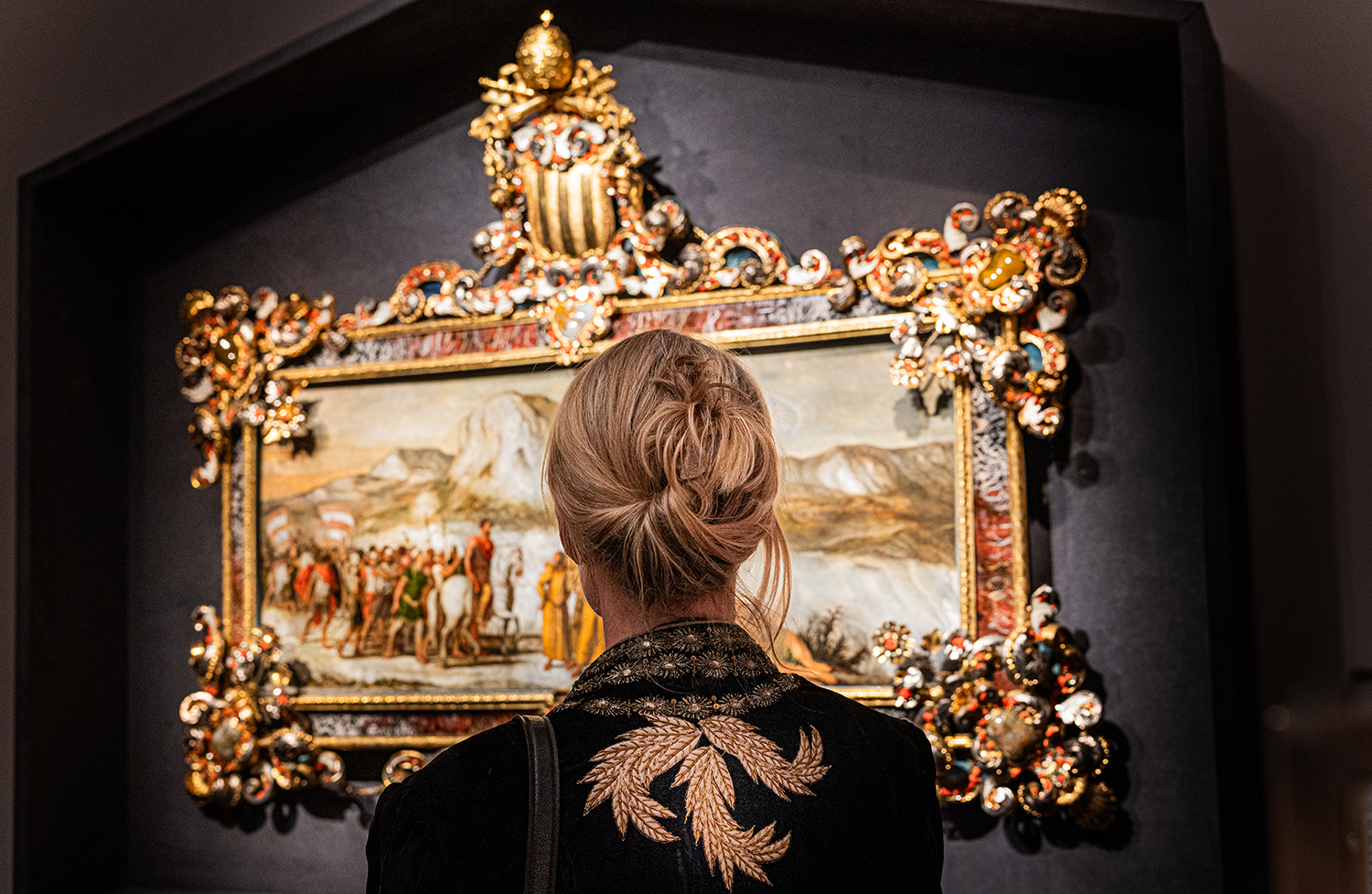
An installation view of TEFAF 2024. Photo: Courtesy of TEFAF
“I think there can never be enough art, and it makes a great part of life, there can always be more,” says Hidde van Seggelen, TEFAF chairman of the board and fellow exhibitor. “Over the past 37 years, through various boards of trustees and committees, we have established something very special here in Maastricht. We have had about 500 museums confirm visitor attendance this year, and over 40 or more traveling with their boards.”
With the recent proliferation of global art fairs, TEFAF in Maastricht sets itself apart with its vigorous vetting process. Each year, before the fair opens, dozens of experts in their field—from academics and curators to conservators and independent scholars—spend hours examining each and every object in the stands—sometimes numbering in the hundreds—to determine authenticity, provenance, and condition.
This stringent method in turn attracts the highest caliber of collector, be it private or institutional, as well as the exhibiting dealers—to buy and sell the best on the market. A celebration of the beauty of creation throughout humanity, the fair promotes the notion of cross-collecting, and it’s hard not to be swept away. Here, amongst the glasses of Ruinart and freshly shucked oysters, there is as much appreciation for a 17th century never-before-seen Flemish Old Master as there is a futuristic contemporary jewel that took over 1,000 hours to complete or a prehistoric relic.
Below, discover some of the most fascinating objects on view.
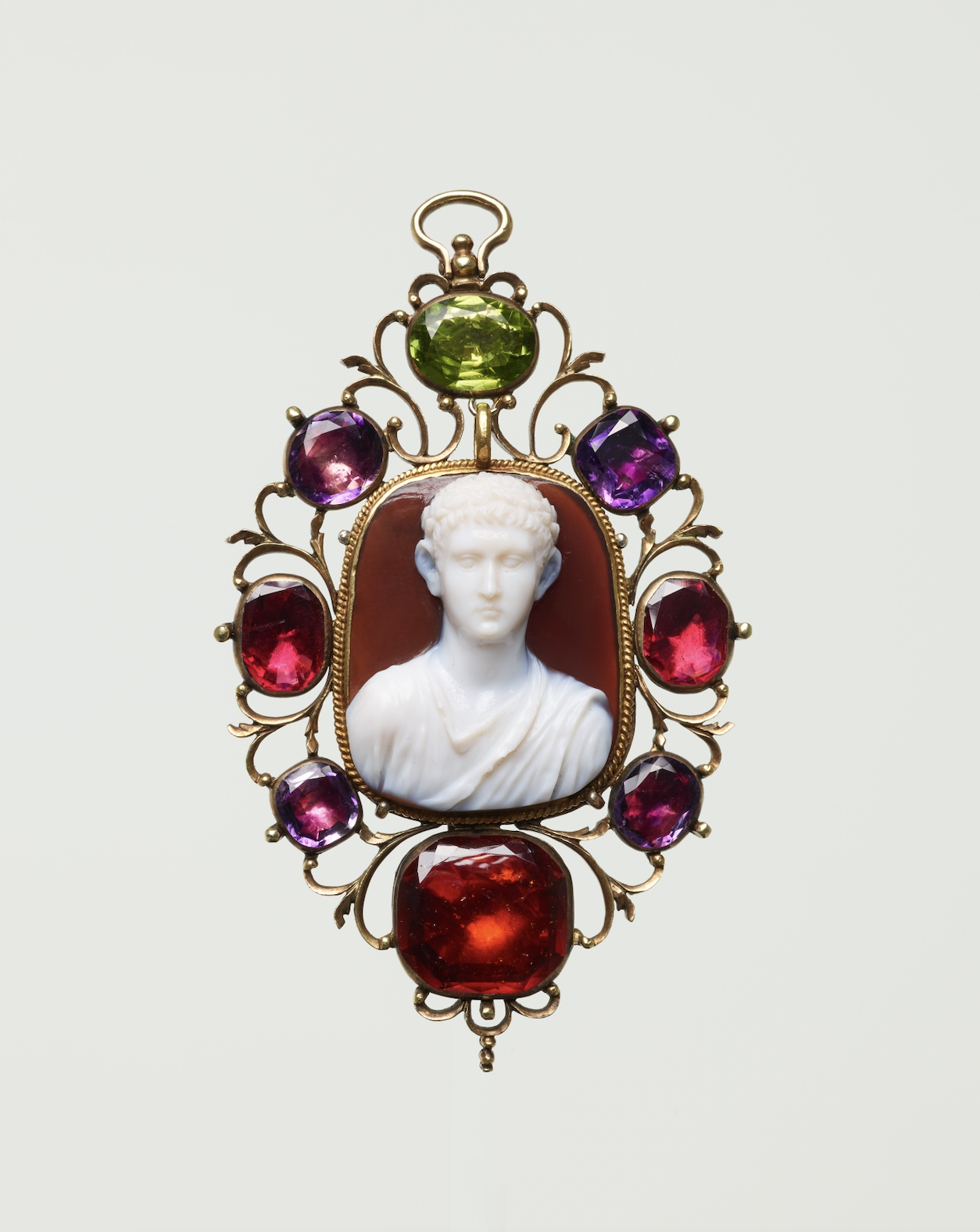
Roman Cameo depicting Agrippa Posthumus. Photo: Courtesy of Galerie Chenel
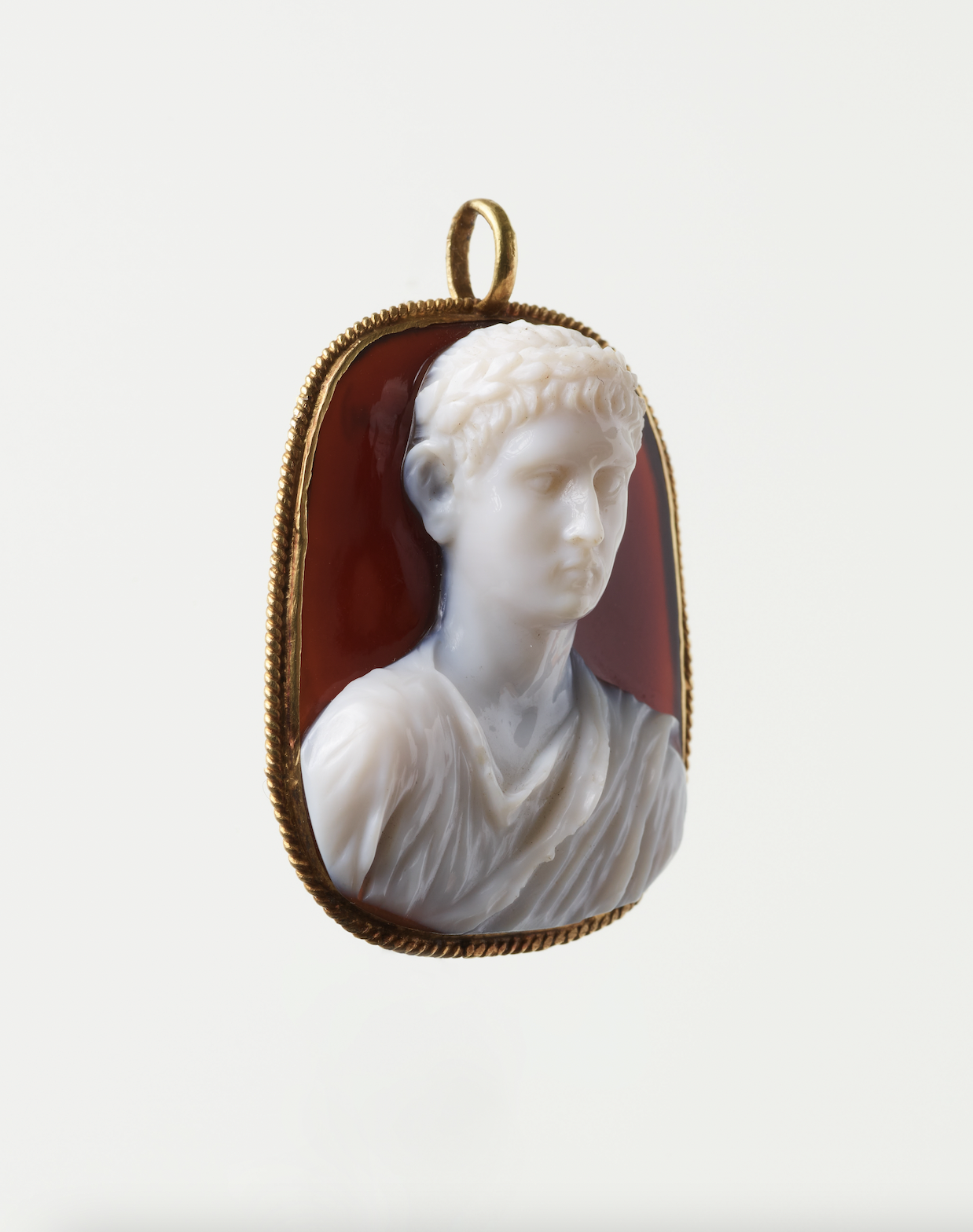
Roman Cameo depicting Agrippa Posthumus. Photo: Courtesy of Galerie Chenel
1. Roman Cameo | Galerie Chenel
Galerie Chenel’s expansive booth is filled an assortment of striking busts and sculpture on plinths. But in the far back corner lies perhaps the most exceptional piece of all—an exquisitely carved Roman cameo from circa-37 AD depicting Agrippa Postumus, the adopted son of Augustus. Crafted from white on brown sardonyx, it beautifully captures his youthful spirit with careful attention paid to his full checks and high cheekbones, a pensive gaze, and stylized hair. In around 1765, the cameo was added to the collection of the Dukes of Marlborough—one of the most prestigious collections of ancient and modern gems in England. Mounted in English gold, the semi-precious gemstones surrounding it were a later addition, thought to have been added in the 18th century. A perfect representation of the history of the Julio Claudian dynasty, it is priced on demand for the range of above $1 million.
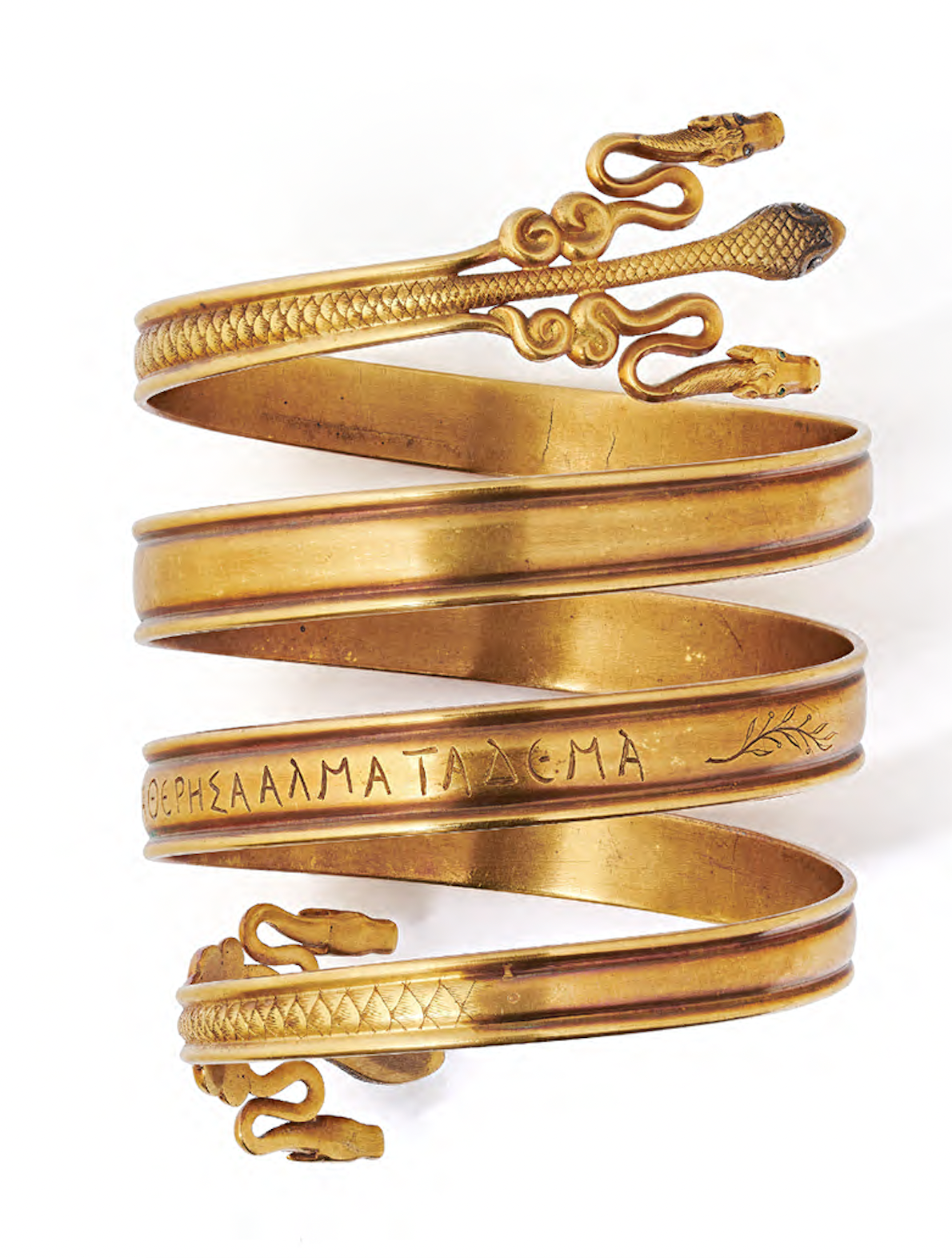
Alma Tadema armlet. Photo: Courtesy of Wartski
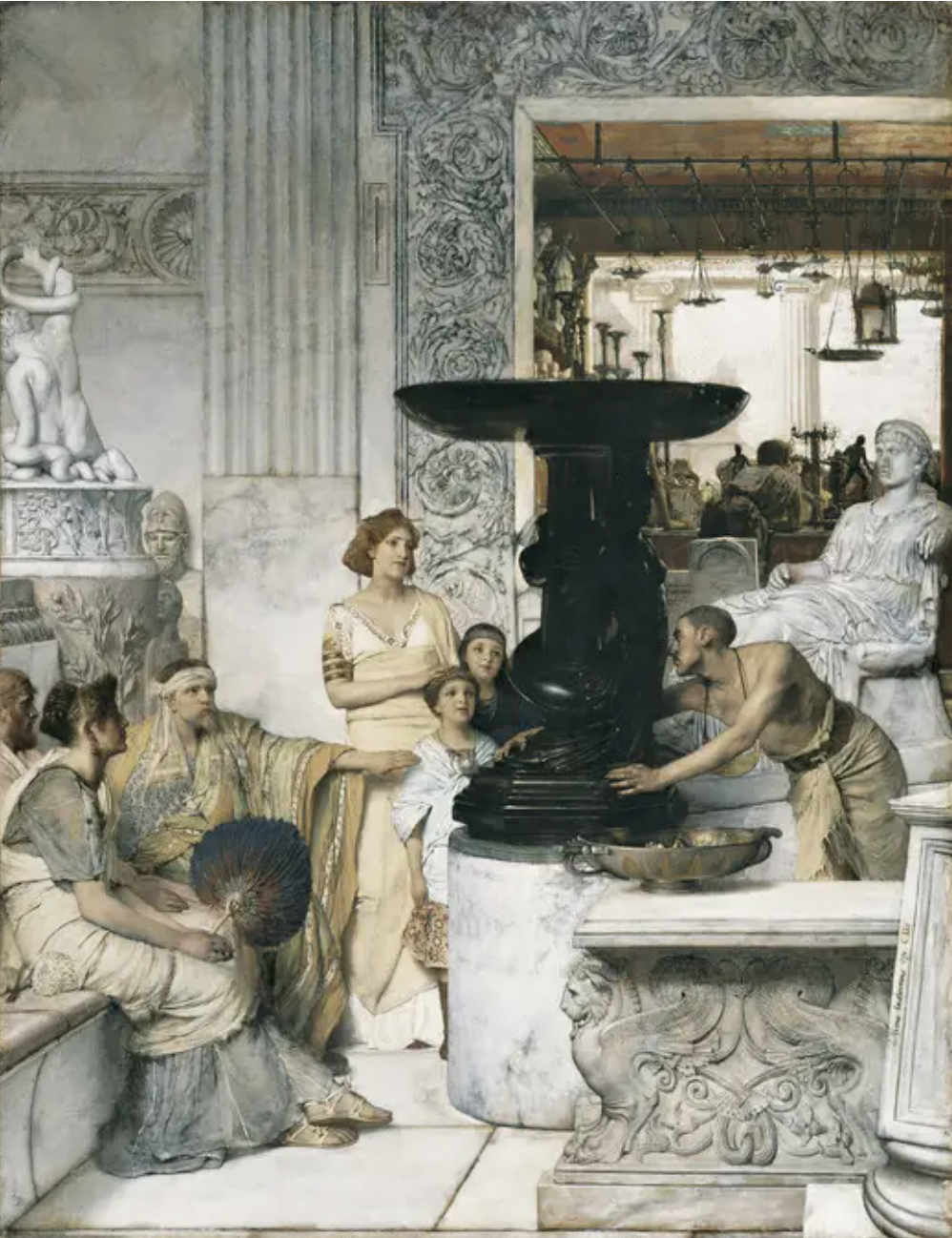
Lawrence Alma-Tadema, The Sculpture Gallery, 1874. Photo: Courtesy of the Hood Museum
2. Gold Armlet Designed by Sir Lawrence Alma-Tadema | Wartski
In the weeks preceding TEFAF, Wartski came into the possession of an exciting new discovery: a gold serpent armlet that was a gift from the celebrated Dutch artist Sir Lawrence Alma Tadema to his wife Laura Epps on their wedding day. Dating between 1871–74, the piece was commissioned to the firm J.S. and A.B. Wyon, who were chief engravers of Her Majesty’s Seals. Inspired by ancient Greek prototypes, it was made to wrap around the arm four times and is inscribed with her name in Greek characters. It features in a number of the artist’s most iconic paintings, including The Sculpture Gallery (1874), which is in the collection of the Hood Museum, as well as The Roses of Heliogabulus (1888), owned by Spanish billionaire Juan Antonio Pérez Simón.
“Not only is the object itself fabulous but it is imbued with such human emotion. The quintessential representation of love,” says director Kieran McCarthy. “When we discovered this piece it was one of those moments where your jaw actually drops.” As for the lucky buyer, McCarthy hopes that Perez may purchase it himself, so someone could wear it sitting in front of the painting.
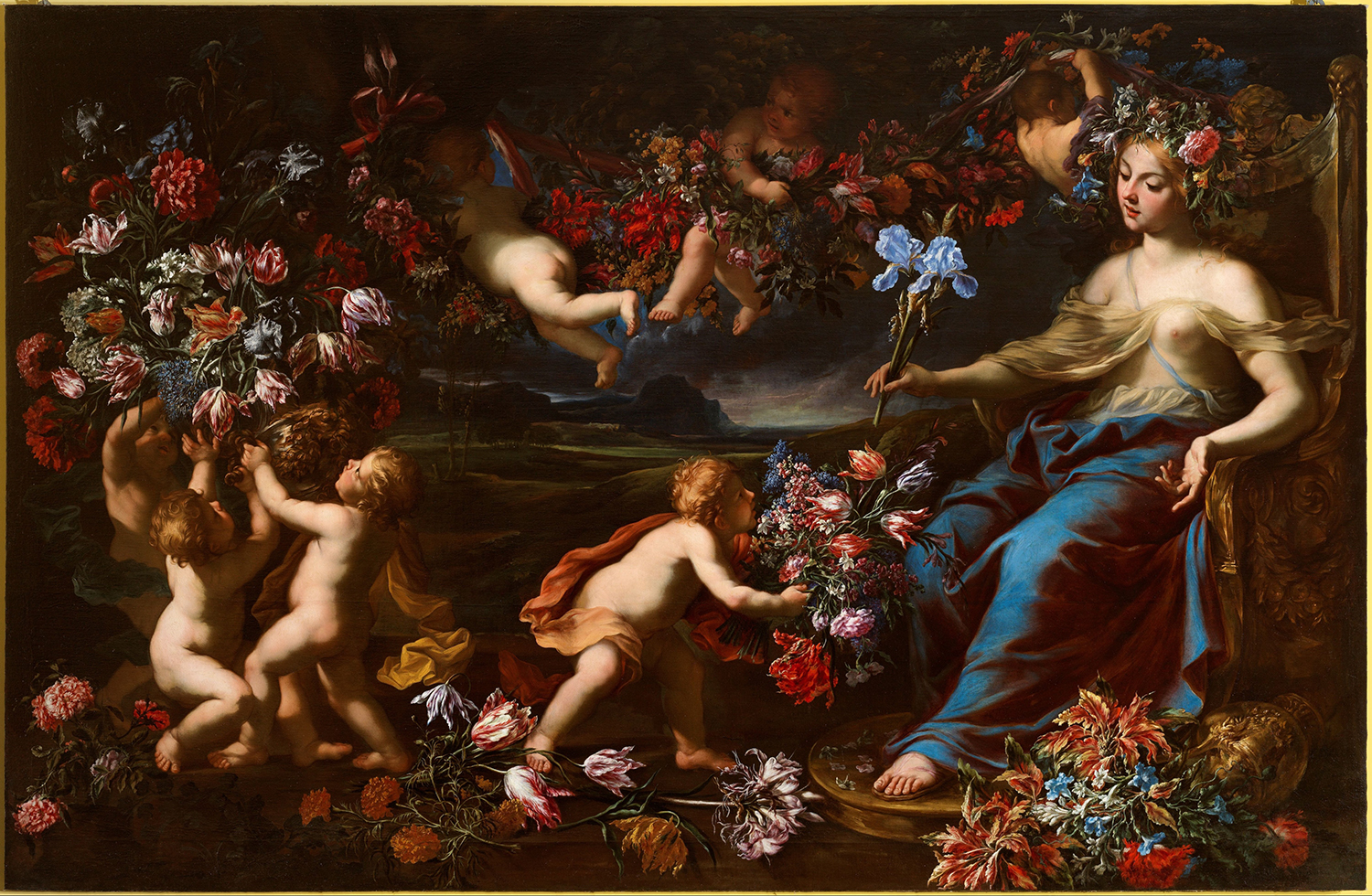
The Triumph of Flora. Photo: Courtesy of Colnaghi
3. Mario Nuzzi (Mario de Fiori) and Raffaello Vanni, the Triumph of Flora, c. 1660 | Colnaghi
Colnaghi, the world’s oldest commercial art gallery specializing in antiquities and Old Masters, returns to TEFAF with a booth celebrating female beauty. The standout is the Triumph of Flora, a large-scale painting made in collaboration between Mario Nuzzi, also known as Mario de’ Fiori, and Raffaello Vanni, commissioned in circa 1660 by Cardinal Giulio Rospigliosi, later Pope Clement IX. This recently rediscovered canvas captures the artistic magnificence of Baroque Rome. Here, the goddess Flora is seated upon a golden throne surrounded by seven joyful cherubs against a backdrop bursting with a variety of vibrant flowers. “TEFAF is the most important fair for us and we prioritize showing the best pieces here,” says Mickal Adler, a specialist from New York. “There are 150 different species of flowers in the painting and Flora is holding a rare Iris. It’s an exquisite piece of the highest quality.”
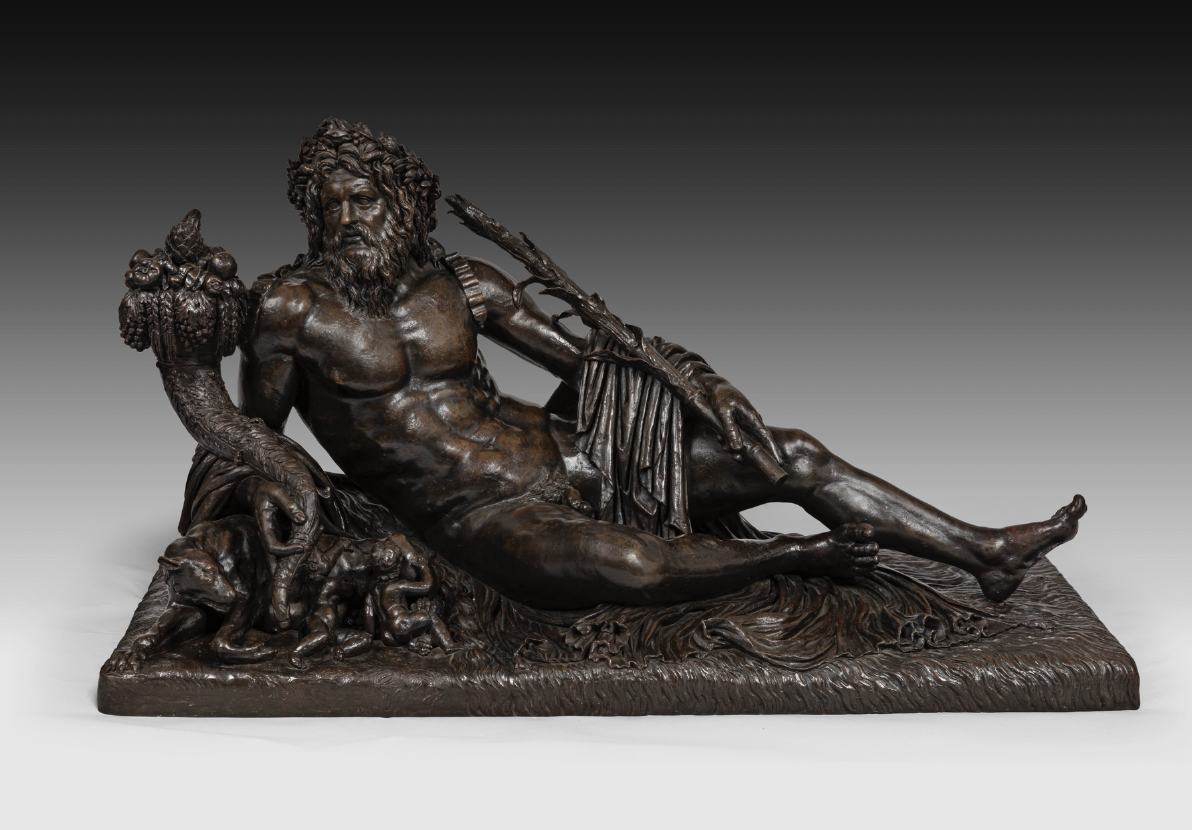
17th century bronze at Galerie Perrin. Photo: Courtesy of TEFAF

17th century bronze at Galerie Perrin. Photo: Courtesy of TEFAF
4. Allegorical Figures of the Rivers Nile and Tiber | Galerie Perrin
At Perrin Gallery’s stand, the very first thing one comes across is a marvelous pair of bronze statues that are said to personify the Nile and Tiber rivers, created in 17th century Rome. “We discovered these only recently in the basement of a Monte Carlo estate—they were completely covered in green paint,” says Patrick Perrin, whose brother Phillipe founded the gallery. “We originally thought that they were French but more research has revealed they were Italian, created around 100 years earlier than the other examples, making them exceptionally rare.” Among the finest bronzes still in private hands, these allegories are masterful interpretations of the famous antiques found in Rome in 1512. Only four other pairs are known and held in the most prestigious collections, including the Wallace Collection in London, the Huntington Collection in San Marino, The National Collection, and the Peter Marino Collection. “These are the kinds of things that us dealer’s dream of—what get us up every morning! A discovery of such a rare treasure does not get better than this.”

Edgar Degas, Ukrainian Dancers. Photo: Courtesy of MS Rau
5. Edgar Degas, Ukrainian Dancers | M.S. Rau
No artist has more beautifully captured the form of dancing than Edgar Degas. This rare pastel, titled Ukrainian Dancers, is a pivotal work within the artist’s celebrated series on these traditional folk dancers. Created with layers of luminous color and vibrancy, it reveals the artist’s bold application of pastel and spontaneous expression. Among the 18 works in his Russian Dancers series from 1899, this pastel was given prominence in its own room during the groundbreaking 2017 exhibition “Degas: Russian Dancers’ and the Art of Pastel” at the J. Paul Getty Museum. Originally acquired by the artist’s brother, René de Gas, at the inaugural Atelier Degas sale in 1918, this work has since been celebrated and displayed worldwide.
“The Ballerinas were much more stoic in nature,” comments Rebecca Rau, a fourth-generation dealer of her family business M.S. Rau in New Orleans. “These traditional dancers from Ukraine are vibrant and full of life. At a time of difficulty in Ukraine, it’s a beautiful celebration of the spirit of the country. We’ve already had a lot of interest from private collectors as well as institutions.” Another highlight at the stand that generated much buzz and swiftly sold during the preview was a small portrait by Van Gogh, Head of a Peasant Woman in a White Cap. The early Dutch painting is a striking and evocative example of the artist’s early portraiture.
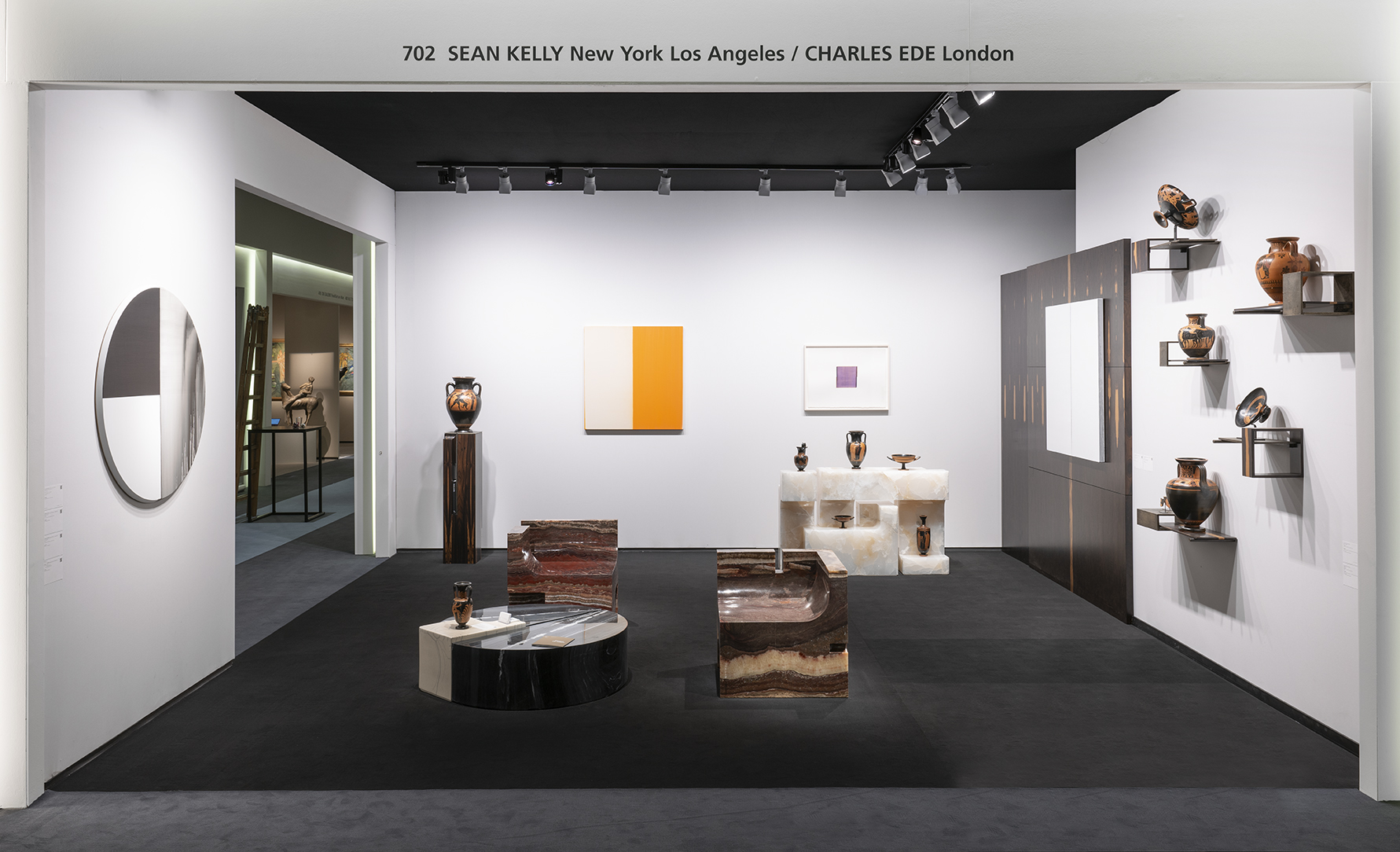
Sean Kelly and Charles Ede at TEFAF. Photo: Courtesy of TEFAF
6. Sean Kelly and Charles Ede
This booth in the fair’s new Focus section celebrates the power of art to transcend time. Sean Kelly gallery in New York teamed up with Charles Ede, a London antiquities dealer, to present a dazzling and unique booth that combined a group of rare ancient Greek red- and black-figure vases with new paintings by Scottish artist Callum Innes and custom-made sculptural furniture crafted by Mexico City-based designer Gloria Cortina. Viewers are invited to consider how ancient objects and contemporary art can work together in a single unified experience. “We are thrilled to present this unprecedented collaboration where the timeless elegance of ancient Greek vessels serves as the muse for a dynamic intersection of contemporary art and avant-garde design,” says Kelly. “The true collector lives with pieces from every period,” Cortina tells Galerie. “I crafted these plinths to compliment the art, they’re made with natural materials like indigenous Mexican wood or stone.”

